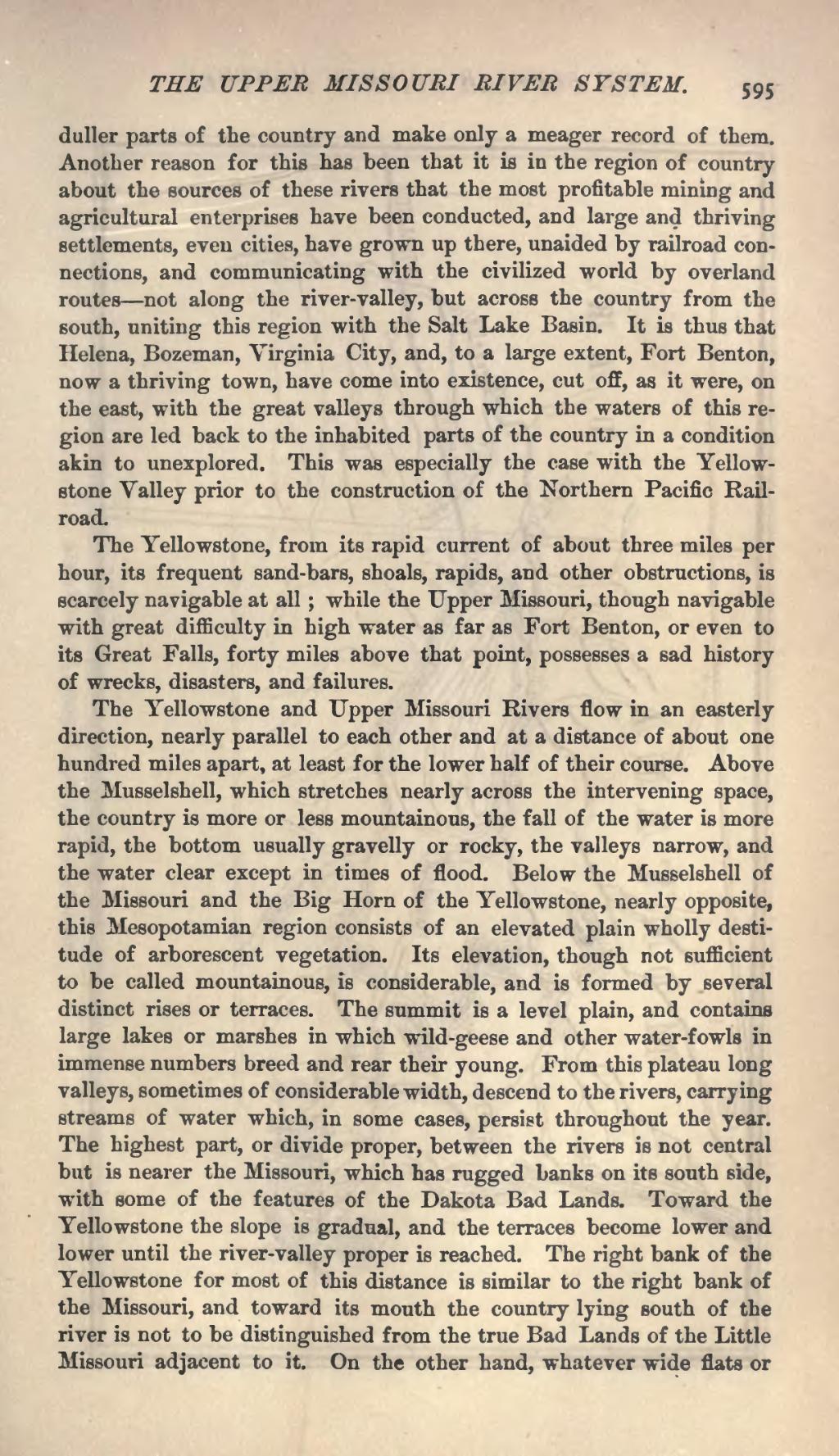duller parts of the country and make only a meager record of them. Another reason for this has been that it is in the region of country about the sources of these rivers that the most profitable mining and agricultural enterprises have been conducted, and large and thriving settlements, even cities, have grown up there, unaided by railroad connections, and communicating with the civilized world by overland routes—not along the river-valley, but across the country from the south, uniting this region with the Salt Lake Basin. It is thus that Helena, Bozeman, Virginia City, and, to a large extent, Fort Benton, now a thriving town, have come into existence, cut off, as it were, on the east, with the great valleys through which the waters of this region are led back to the inhabited parts of the country in a condition akin to unexplored. This was especially the case with the Yellowstone Valley prior to the construction of the Northern Pacific Railroad.
The Yellowstone, from its rapid current of about three miles per hour, its frequent sand-bars, shoals, rapids, and other obstructions, is scarcely navigable at all; while the Upper Missouri, though navigable with great difficulty in high water as far as Fort Benton, or even to its Great Falls, forty miles above that point, possesses a sad history of wrecks, disasters, and failures.
The Yellowstone and Upper Missouri Rivers flow in an easterly direction, nearly parallel to each other and at a distance of about one hundred miles apart, at least for the lower half of their course. Above the Musselshell, which stretches nearly across the intervening space, the country is more or less mountainous, the fall of the water is more rapid, the bottom usually gravelly or rocky, the valleys narrow, and the water clear except in times of flood. Below the Musselshell of the Missouri and the Big Horn of the Yellowstone, nearly opposite, this Mesopotamian region consists of an elevated plain wholly destitude of arborescent vegetation. Its elevation, though not sufficient to be called mountainous, is considerable, and is formed by several distinct rises or terraces. The summit is a level plain, and contains large lakes or marshes in which wild-geese and other water-fowls in immense numbers breed and rear their young. From this plateau long valleys, sometimes of considerable width, descend to the rivers, carrying streams of water which, in some cases, persist throughout the year. The highest part, or divide proper, between the rivers is not central but is nearer the Missouri, which has rugged banks on its south side, with some of the features of the Dakota Bad Lands. Toward the Yellowstone the slope is gradual, and the terraces become lower and lower until the river-valley proper is reached. The right bank of the Yellowstone for most of this distance is similar to the right bank of the Missouri, and toward its mouth the country lying south of the river is not to be distinguished from the true Bad Lands of the Little Missouri adjacent to it. On the other hand, whatever wide flats or
